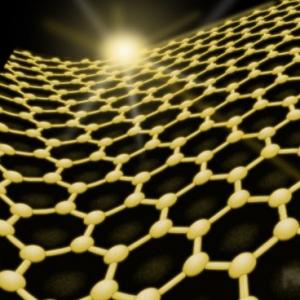Graphene generates current from light due to a hot-carrier response
It's been known for a long time that Graphene generates current from light. Up until now everybody assumed it was due to the photovoltaic effect, but a new research by MIT researchers shows that this is not true. They found that light on graphene causes it to develop two regions with different electrical properties which creates a temperature difference.
This "hot-carrier response" is what generates the current - and it's very unusual - it's been observed before but only under very low temperature or when using intense high power laser. The reason for this unusual thermal response is that graphene is the strongest material known. In most materials, superheated electrons would transfer energy to the lattice around them. In the case of graphene, however, that’s exceedingly hard to do, since the material’s strength means it takes very high energy to vibrate its lattice of carbon nuclei â so very little of the electrons’ heat is transferred to that lattice.
